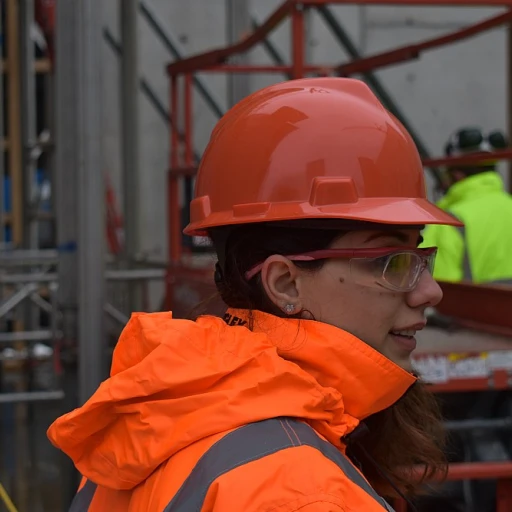
Understanding the Back-to-Back Interview Approach
Exploring the Effectiveness of Back-to-Back Interviews
In the realm of talent acquisition, scheduling back-to-back interviews has become a common approach among hiring managers aiming to streamline the interview process. This method involves scheduling multiple interviews for a candidate consecutively on the same day, often with short breaks in between. But what are the underlying reasons behind this approach, and is it truly the best time-saving strategy for the hiring process? The concept of back-to-back interviews is primarily rooted in the desire to fill job openings quickly without compromising the quality of hire. By compressing the interview schedule into a single day, organizations can expedite the hiring process and minimize the time candidates spend waiting for feedback. This strategy can be particularly beneficial in fast-paced industries where the speed of hiring is crucial. Key players in this approach are the interviewers and candidates. For interviewers, back-to-back interviews offer the advantage of efficiency. They allow hiring teams to gather insights from different interviewers right away, reducing the risk of scheduling conflicts and interviewer fatigue that can arise with extended interview processes. Team members involved in interviewing also have the opportunity to compare notes and impressions shortly after meeting the candidates, which can lead to more effective decision-making. On the flip side, it's vital to consider the candidate experience. For candidates, this interview method requires substantial preparation ahead of time. They must be ready to answer a series of interview questions promptly, from multiple interviewers, under the pressure of a tight schedule. Moreover, the potential for fatigue or stress can impact their performance and skew the interview outcomes. In considering adopting this approach, hiring managers must weigh the benefits of a streamlined schedule against the possible drawbacks for candidates. Implementing the right balance and best practices can enhance the effectiveness of the back-to-back interviews strategy in your overall hiring process. For a deeper understanding of interview scheduling responsibilities, explore further insights on how you can enhance your talent acquisition strategy here.Benefits of Back-to-Back Interviews for Employers
Advantages Offered by Continuous Interview Blocks for Employers
The back-to-back interview strategy can be advantageous for employers in the talent acquisition process. When interviewers schedule interviews consecutively throughout the day, they streamline the interviewing process, allowing the hiring team to fill the job positions more quickly. This scheduling method often leads to a more efficient use of both time and resources. Key benefits for employers include:- Time Efficiency: When interviews are booked closer together, it reduces downtime. Hiring managers can review multiple candidates in a shorter time frame, which can be helpful during high-volume recruitment phases.
- Consistent Candidate Evaluation: Interviewers can better compare candidates when they meet them in a short succession. Insights and perspectives remain fresh, allowing for more accurate assessments and easier comparisons between candidates.
- Streamlined Interview Process: A structured scheduling approach can also contribute to a more organized interview process. With back-to-back scheduling, all involved team members are often more focused and prepared to ask pertinent interview questions.
- Enhanced Collaboration Among Team Members: This close scheduling can foster collaboration as various team members engage in interviews within a concise timeframe. It encourages immediate feedback and discussion, supporting a unified decision-making process throughout the hiring journey.
Challenges and Drawbacks for Candidates
Candidate's Perspective: Navigating the Challenges
For many candidates, back-to-back interviews can present unique challenges. First, the sheer intensity of meeting multiple interviewers with little to no break between sessions might lead to fatigue. This approach requires candidates to maintain high energy levels throughout the day, and for those unaccustomed to such intensity, it can be overwhelming. Moreover, the compressed schedule leaves little time for short breaks. These intervals are crucial for regrouping thoughts, reflecting on interview questions, and preparing for the next round. In back-to-back settings, candidates might not have the needed opportunity to reset, leading to potential lapses in concentration. Another potential challenge lies in the variety of interviewing styles. When meeting different members of the hiring team, each is likely to have different interview guides and priorities. Candidates are expected to adapt quickly and handle diverse expectations, which can be particularly daunting when there is no pre-interview briefing. The interview process can also amplify anxiety levels for some candidates. Knowing that they need to impress multiple interviewers in a single day can add pressure, affecting performance negatively. It's vital for hiring managers to be mindful of the candidate experience to avoid inadvertently creating undue stress, which could impact their ability to assess the candidate's true potential. Lastly, privacy policy concerns may arise when candidates feel rushed through the process. With limited time for negotiation or reflection, they might not fully grasp their rights reserved during hiring decisions, such as understanding the implications of pre-adverse action in talent acquisition. While back-to-back interviews have their merits, it's essential to acknowledge and address the challenges they pose to ensure a fair and positive candidate experience. Adopting best practices in scheduling interviews can help alleviate some of these pressures.Impact on Hiring Decisions
Influence of Back-to-Back Interviews on Recruitment Outcomes
Scheduling interviews consecutively without ample time for reflection can significantly affect hiring outcomes. The compressed time frame often limits interviewers' capacity to balance thorough evaluation with time efficiency. As they engage in the back interviews, the constant transitioning may lead to fatigue, reducing attention to detail and affecting important hiring decisions. Moreover, shorter intervals between one interview and the next increase the likelihood of overlooking key interview questions or insights that could be critical in the interview process. Interviewers might unconsciously compare candidates based on their immediate past interactions, leading to possible biases that could skew the final hiring decision. Despite the efficiency such scheduling might seem to bring, the continuous sessions might pressure both hiring managers and team members into making rushed judgments. This can inadvertently overshadow the intended purpose of back-to-back interviews, which is to streamline and optimize the talent acquisition process. When done without strategic forethought, the risk is a compromise in the quality of hire. This scenario stresses the importance of best practices like incorporating short breaks and ensuring interview training to enhance candidate assessment. Ultimately, while back-to-back interviews aim to speed up the hiring process and reduce the time it takes to fill positions, their impact on recruitment decisions must be carefully considered. It is essential to weigh not just the time savings, but also how the candidate experience and subsequent hiring decisions can be impacted.Best Practices for Scheduling Interviews
Optimizing the Interview Schedule
When it comes to scheduling interviews, finding the best time and approach is crucial for both the interviewer and the candidate. A well-structured interview schedule can significantly enhance the candidate experience and improve the overall hiring process. Here are some best practices to consider:
- Allow for Short Breaks: Scheduling short breaks between interviews is essential. This gives both the interviewer and the candidate a moment to regroup, reflect on the previous session, and prepare for the next set of interview questions. It also helps in maintaining energy levels throughout the day.
- Consider the Best Time of Day: The best time to schedule interviews is when both parties are most alert and focused. Typically, mid-morning or early afternoon slots are ideal, avoiding the post-lunch slump or end-of-day fatigue.
- Use Interview Guides: Providing interviewers with structured interview guides ensures consistency and fairness in the interview process. This helps in evaluating candidates effectively and reduces the risk of bias.
- Train Interviewers: Interview training for hiring managers and team members is crucial. It ensures that they are well-prepared to ask relevant questions and assess candidates accurately, contributing to a more effective hiring process.
- Respect Candidate Privacy: Always adhere to a privacy policy that respects the candidate's rights. Ensure that any personal information shared during the interview process is handled with confidentiality.
By implementing these best practices, companies can optimize their interview scheduling process, making it more efficient and candidate-friendly. This not only helps in filling job positions with the right talent but also enhances the overall talent acquisition strategy.
Alternatives to Back-to-Back Interviews
Exploring Alternative Interview Approaches
While scheduling back-to-back interviews has its advantages and disadvantages, there are several alternative strategies that can be just as effective in the interview process, potentially benefiting both the hiring managers and the candidates involved.
- Flexible Interview Timelines: Instead of cramming interviews into a single day, consider spreading them out over a couple of days. This approach can alleviate the pressure on both the interviewers and candidates, allowing for more thoughtful participation and feedback.
- Structured Interview Segments: Breaking down the interview into distinct phases or segments, with time allocated for different types of questions, can help maintain focus. This allows the interviewer to concentrate on specific competencies aligned with the job role without overwhelming the candidate.
- Virtual Interviews: Offering virtual interviews can provide greater flexibility and ease of scheduling. It can also broaden the talent pool, as candidates from different locations can participate without the need for extensive travel.
- Pre-Recorded Video Interviews: Allow candidates to answer predetermined questions on a recorded video platform. This can be an efficient way to assess candidates before inviting them for a live interview, saving both parties' time.
- Interviewing Panel Rotations: Rotate interviewers during the interviewing day to avoid any single interviewer hosting candidates back-to-back. This provides the candidate with diverse perspectives and reduces fatigue for the interviewers.
By considering these alternatives, organizations can enhance the overall candidate experience and optimize their hiring process. Ultimately, it’s about tailoring the interview schedule to fill the position effectively while ensuring all members of the hiring team are comfortable and informed.








